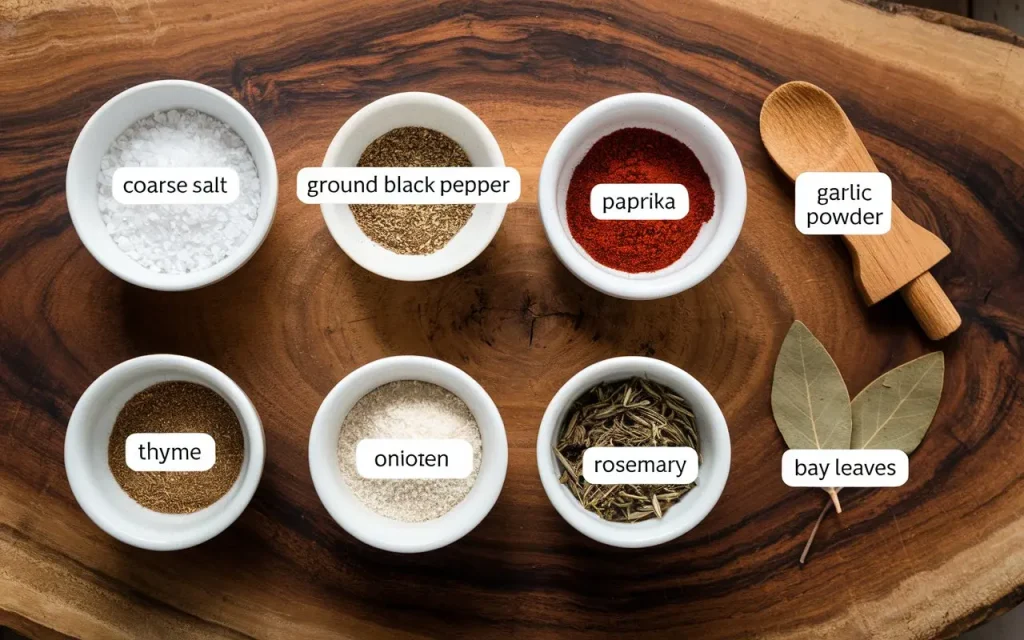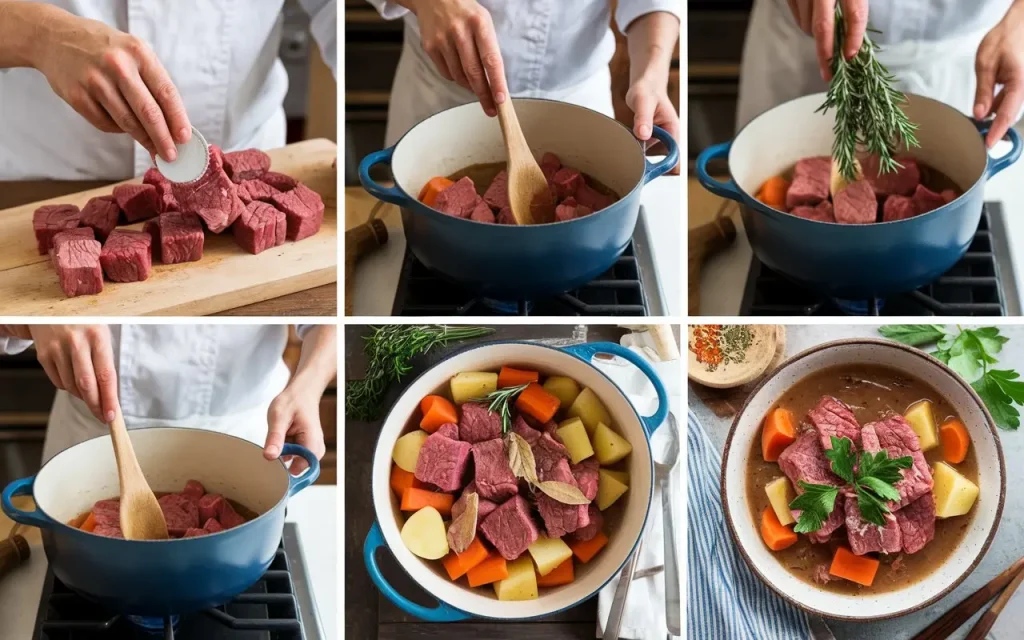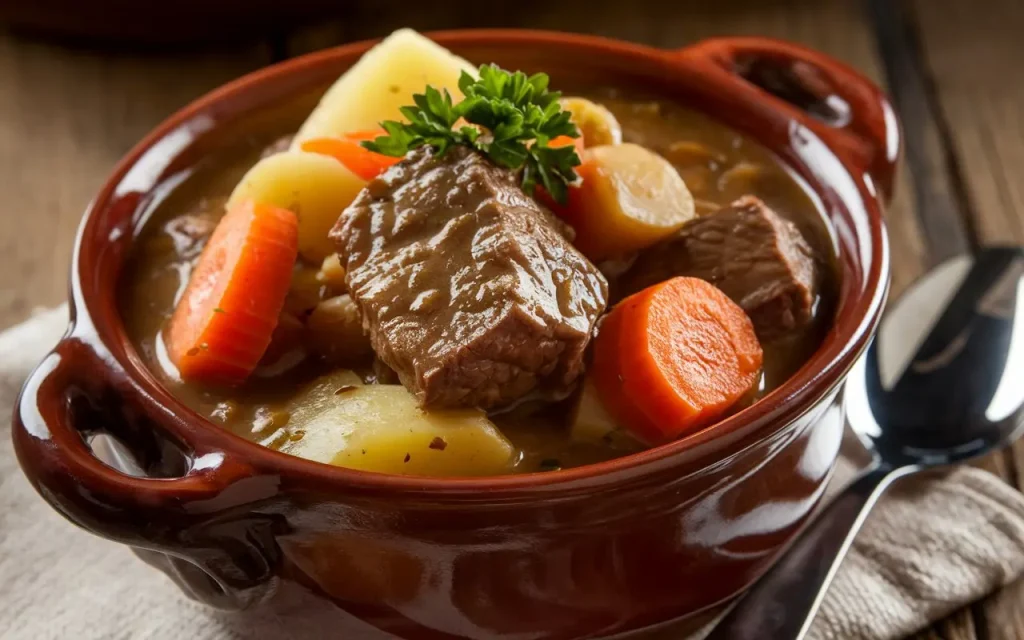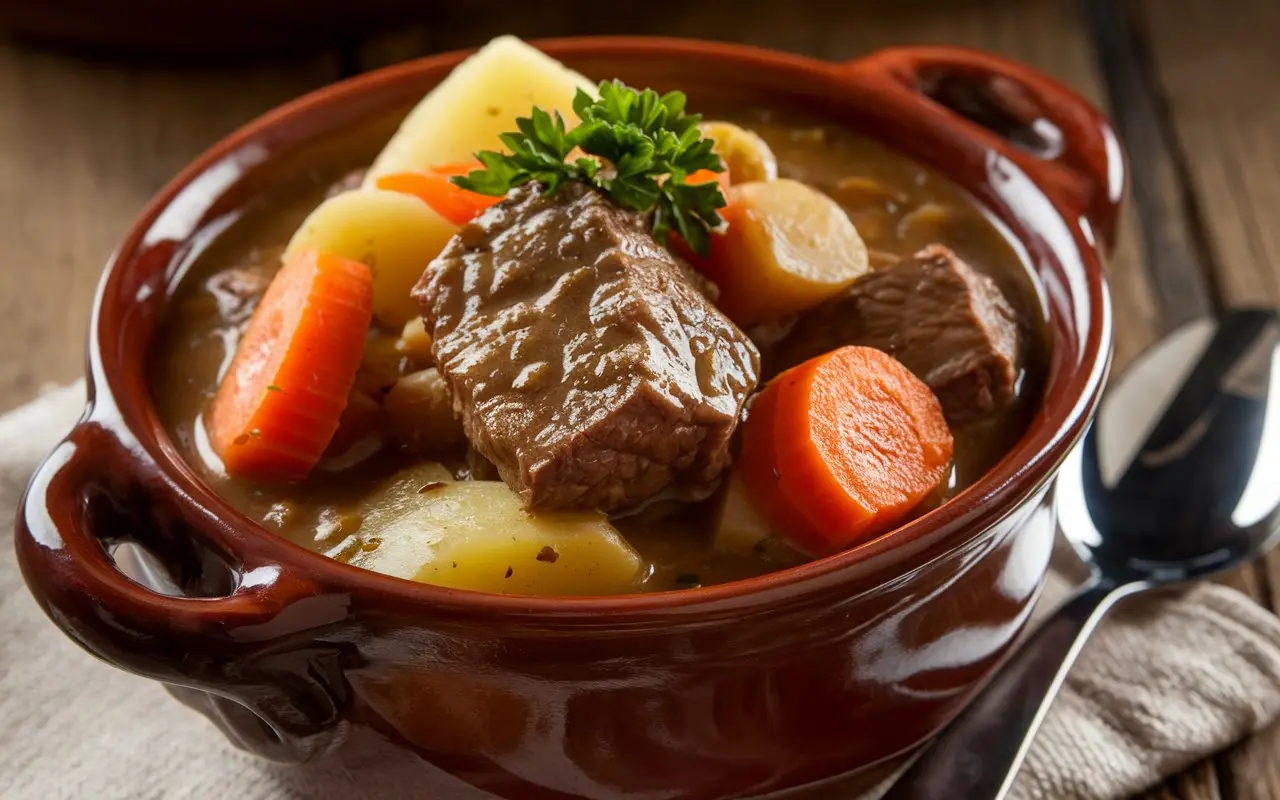Beef Stew Seasoning: The Secret to a Rich, Hearty, and Comforting Stew
There are few dishes as comforting as a hearty beef stew. Whether it’s a chilly autumn evening or a cozy family dinner, beef stew never fails to hit the spot. But what makes a stew truly unforgettable? Beyond the perfect cut of beef and the right combination of vegetables, the answer lies in the seasoning. A well-balanced seasoning blend can elevate a simple pot of stew into a dish that’s bursting with rich, complex flavors.
In this comprehensive guide, we’ll dive deep into the essential components of beef stew seasoning, explore how to customize your own blend, and even share tips for adding a global twist to your stew with seasoning variations from different cuisines. By the end, you’ll be equipped with everything you need to create a stew that will have your family and friends coming back for seconds—if not thirds.
Table of Contents:
- Why Seasoning is the Soul of Beef Stew
- Essential Spices for the Perfect Beef Stew
- The Role of Herbs in Beef Stew
- Fresh vs. Dried Herbs: Which Should You Use?
- Crafting Your Own Signature Beef Stew Seasoning Blend
- Beef Stew Seasoning Variations from Around the Globe
- Common Mistakes to Avoid When Seasoning Beef Stew
- How to Adjust the Seasoning for Different Palates
- Frequently Asked Questions About Beef Stew Seasoning
- Final Thoughts: Mastering the Art of Beef Stew Seasoning
Why Seasoning is the Soul of Beef Stew
Seasoning is not just about adding flavor to a dish; it’s about enhancing and balancing the natural flavors already present in the ingredients. In the case of beef stew, the meat provides a deep, umami-rich base, while the vegetables offer sweetness and earthiness. However, without the right blend of spices and herbs, these flavors can fall flat or become one-dimensional.
Internal Link Opportunity:
If you’re interested in experimenting with different flavor profiles, you might also enjoy Hamburger Green Beans Tomato and Potato Casserole, another hearty dish that benefits from careful seasoning.
A well-seasoned beef stew is a symphony of flavors. The salt draws out the natural juices from the meat, while spices like pepper and paprika add warmth and depth. Herbs like thyme and rosemary provide aromatic top notes, while bay leaves contribute subtle complexity. The result is a dish that’s not just satisfying but deeply flavorful and memorable.
Essential Spices for the Perfect Beef Stew
The foundation of any great beef stew seasoning starts with a few essential spices. These are the building blocks that bring the dish to life, turning a basic combination of beef and vegetables into something extraordinary.
- Salt: Often underestimated, salt is the single most important ingredient in any stew. It enhances the natural flavors of the meat and vegetables and ensures that every bite is flavorful.
- Black Pepper: A staple in beef stew, black pepper adds a slight kick and enhances the overall flavor profile.
- Paprika: Whether sweet or smoked, paprika provides a rich color and a mild heat that complements the heartiness of the beef.
- Garlic: Both fresh and powdered garlic work wonders in beef stew. It adds a savory, slightly pungent flavor that enhances the richness of the dish.
- Onion Powder: This spice offers a concentrated burst of onion flavor without the texture of chopped onions. It’s a must-have for building depth in the broth.
- Bay Leaves: A couple of bay leaves can elevate your stew, adding a subtle yet distinct herbal flavor that balances the richness of the meat.
Internal Link Opportunity:
Speaking of rich flavors, you may also enjoy the creamy goodness of this Creamy Potatoes and Mushrooms Recipe, another comforting dish that relies on well-seasoned ingredients for its success.
The Role of Herbs in Beef Stew
While spices bring heat and warmth to the dish, herbs provide freshness and complexity. The key to a truly flavorful beef stew is finding the right balance between herbs and spices. Herbs can be used in two forms—fresh or dried—each offering its own benefits.
Thyme:
One of the best herbs for beef stew, thyme has a subtle, minty flavor that pairs beautifully with the richness of the beef.
Rosemary:
Strong and aromatic, rosemary lends a pine-like fragrance to the stew. It works particularly well in slow-cooked dishes where the flavors have time to meld.
Parsley:
Fresh parsley is often used as a garnish, but it can also be added towards the end of cooking to brighten up the dish.
Bay Leaves:
As mentioned earlier, bay leaves are indispensable in stews, adding a depth of flavor that’s both herbal and slightly floral.
Internal Link Opportunity:
Looking for more herb-forward dishes? Check out the Chicken Pot Pie in Phyllo Pastry, which uses a similar balance of herbs to create a comforting, savory filling.
Fresh vs. Dried Herbs: Which Should You Use?
One of the most common questions when making beef stew is whether to use fresh or dried herbs. The answer largely depends on what you have on hand and how long the stew will be cooking.
Fresh Herbs:
Fresh herbs, such as parsley or thyme, can offer a vibrant and bright flavor. However, they should be added towards the end of the cooking process to preserve their delicate flavors.
Dried Herbs:
Dried herbs are much more concentrated in flavor and can withstand longer cooking times. They’re perfect for slow-cooked dishes like beef stew, where the heat will help release their full aroma and flavor.
Tip:
A good rule of thumb is to use about one-third of the amount of dried herbs in place of fresh. For example, if a recipe calls for 1 tablespoon of fresh thyme, use just 1 teaspoon of dried thyme.
Crafting Your Own Signature Beef Stew Seasoning Blend
Now that we’ve covered the essential spices and herbs, it’s time to talk about creating your own seasoning blend. Crafting your own blend allows you to control the flavor balance, tailor it to your preferences, and even experiment with new combinations.
Basic Beef Stew Seasoning Blend Recipe:
- 1 tablespoon salt
- 1 tablespoon black pepper
- 1 tablespoon paprika (sweet or smoked, depending on your preference)
- 1 teaspoon garlic powder
- 1 teaspoon onion powder
- 1 teaspoon thyme (dried)
- 1 teaspoon rosemary (dried)
- 2 bay leaves (remove before serving)

Instructions:
Combine all the spices and herbs in a small bowl. Store in an airtight container for up to six months. Use 1 to 2 tablespoons of the blend per batch of stew, adjusting to taste as needed.
Pro Tip:
If you like your stew with a bit of heat, feel free to add 1/2 teaspoon of crushed red pepper flakes to the mix.
Internal Link Opportunity:
Speaking of spices, if you’re a fan of experimenting with seasoning blends, you’ll love the flavor punch in this Air Fryer Steak Bites recipe, where seasoning is key to achieving that crispy, flavorful finish.
Beef Stew Seasoning Variations from Around the Globe
If you’re feeling adventurous, why not take your beef stew on a culinary trip around the world? With just a few adjustments to your seasoning blend, you can create international variations that offer a fresh twist on this classic dish.
French-Inspired Beef Stew (Boeuf Bourguignon):
- Thyme, parsley, and bay leaves form the base, with a generous splash of red wine to deepen the flavor. This is a classic French stew that’s all about richness and sophistication.
Mexican-Inspired Beef Stew:
- Add cumin, coriander, chili powder, and oregano to give your stew a Southwestern kick. Serve with a side of tortillas and garnish with cilantro for a true fiesta of flavors.
Middle Eastern-Inspired Beef Stew:
- Season your stew with cinnamon, turmeric, cumin, and a pinch of allspice for a warm, exotic flavor profile. This version pairs beautifully with couscous or rice.
Italian-Inspired Beef Stew:
- Add basil, oregano, rosemary, and a pinch of fennel seeds for an Italian twist. A splash of red wine and some fresh tomatoes will further enhance the Mediterranean flavors.
Internal Link Opportunity:
For another unique fusion of flavors, you might want to try this Sweet Potato Ukoy with Palabok Recipe, a Filipino-inspired dish that balances savory and sweet in a delightful way.
Common Mistakes to Avoid When Seasoning Beef Stew
Even the most experienced cooks can make mistakes when seasoning beef stew. Here are a few common pitfalls to watch out for:

1. Underseasoning:
Beef stew can handle bold flavors, so don’t be afraid to be generous with your seasonings.
2. Adding Salt Too Early:
Adding salt early on is important, but adding too much can result in an overly salty dish. Start with a moderate amount and adjust later in the cooking process.
3. Using Water Instead of Stock:
One of the easiest ways to enhance the flavor of your stew is by using beef or vegetable stock instead of water. The stock adds another layer of flavor that water simply can’t provide.
4. Overseasoning with Fresh Herbs:
Fresh herbs can be potent, and adding too many can overpower the stew. Always taste as you go.
Internal Link Opportunity:
Looking to further your skills in flavor balancing? Check out this recipe for Low-Calorie Mac and Cheese with Cream Cheese, which offers a lighter take on comfort food that still packs a flavorful punch.
How to Adjust the Seasoning for Different Palates
One of the joys of cooking is customizing a dish to suit different tastes. Whether you’re cooking for a crowd or just for yourself, here are some tips for adjusting the seasoning to match your preferences:
Spicier Stew:
Add more black pepper, paprika, or even a pinch of cayenne pepper.
Sweeter Stew:
A splash of balsamic vinegar or a touch of brown sugar can enhance the sweetness of the vegetables.
For a More Herbaceous Stew:
Don’t hesitate to add more fresh herbs like parsley, thyme, or rosemary. Just remember to add them at the end of cooking for maximum freshness.

Internal Link Opportunity:
For more tips on adjusting flavors, consider exploring this Change Your Life Chicken Recipe, which demonstrates how seasoning can transform a simple dish into something truly extraordinary.
Frequently Asked Questions About Beef Stew Seasoning
Q: Can I use pre-made seasoning packets?
A: Yes, but making your own blend allows you to control the salt and flavor levels. Many store-bought packets contain preservatives and additives that you may want to avoid.
Q: How can I thicken my beef stew?
A: There are several ways to thicken beef stew, including using flour, cornstarch, or mashed potatoes. Adding a roux (butter and flour mixture) early on can also help create a thicker, richer broth.
Q: What cut of beef should I use for stew?
A: Chuck roast is the best option for beef stew. It’s a well-marbled cut that becomes tender when slow-cooked. Other good options include brisket and short ribs.
Q: Can I freeze leftover beef stew?
A: Absolutely! Beef stew freezes well and can be stored for up to three months. Just be sure to let it cool completely before transferring it to an airtight container.
Final Thoughts: Mastering the Art of Beef Stew Seasoning
Beef stew is a classic dish that thrives on its rich, comforting flavors. While the meat and vegetables are important, the seasoning is what truly brings the dish together. By mastering the essential spices and herbs, experimenting with global seasoning variations, and learning how to adjust the flavors to suit different palates, you’ll be well on your way to creating a beef stew that’s deeply flavorful and satisfying.
Internal Link Opportunity:
If you’re looking to expand your collection of hearty, comforting recipes, don’t forget to check out this Air Fryer Steak Bites for a quick and flavorful meal option.

